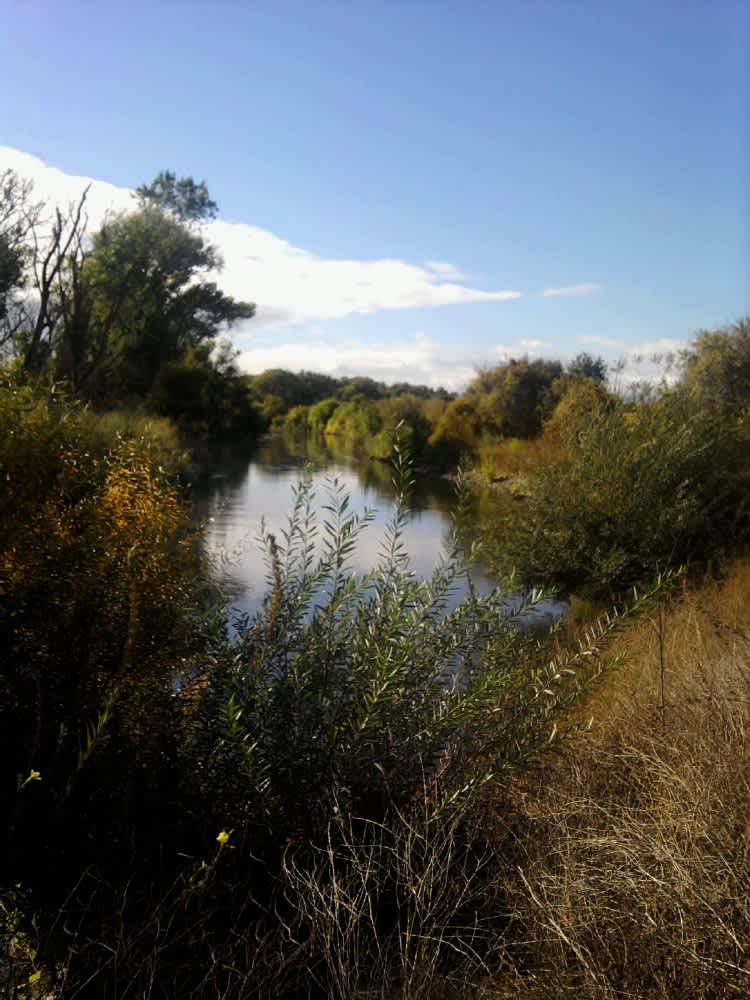The Injustice of Trespassing on “Public” Lands
Don Moyer 11.02.12

Located in the coastal hills of California between the towns of Tracy and Livermore are the remains of two ghost towns: Carnegie and Tesla.
Carnegie’s economy was based on its clay deposits and it had huge factories and kilns that manufactured bricks, roof tiles, and clay pipe. When the brick works shut down in 1911 due to a bank failure, the town withered and died, leaving dozens of abandoned brick buildings and smokestacks. For safety reasons, the giant smoke stacks were dynamited on May 27, 1917. For decades, area residents would drive their trucks out to Carnegie and load them with free bricks. Many of the local towns still sport patios, walkways, and brick barbeques constructed with Carnegie bricks.
The town of Tesla had an economy based upon coal and had several huge coal mines that tunneled into the earth. In its heyday, there were over 800 miners working and living in the company town, producing over 80,000 tons of coal a year. There were stores, churches, saloons, a school, a hospital, a hotel, and a public library. Like Carnegie, a few miles to the west, Tesla was closed in 1911 because of a bank failure. Most of the wood buildings were either dismantled or burned and for over 80 years, Tesla was simply home to a large cattle grazing operation. Growing up in the area, I became acquainted with numerous area ranchers and had permission to hike, hunt, and explore the old mines at Tesla. My school buddies and I spent countless hours crawling around in the abandoned mines. Our mothers truly earned their grey hair.
In 1998 the 3,000 acre Tesla ghost town site was purchased by the State of California as an addition to the already existing Carnegie Cycle Park. About 10 years ago, my son Donald wanted to see the Tesla ghost town site and explore the remains of a once-thriving town. Along with two of his friends, Kate and Lucy, we drove up into the hills and parked on the side of the public road near the edge of the property. We explored the site and the old mine tunnels–the kids were fascinated with the history, geology, and wildlife, much as I and my buddies had been a generation earlier. We watched golden eagles and coyotes hunting for their next meal. We wondered at the layers of sedimentary rock, the fossils, and we marveled at the ingenuity of the old miners who hacked coal from the mountain a hundred years earlier. Unfortunately, I can’t go there anymore, and you can’t go there either. The California State Parks department hasn’t officially opened the 3,000 acres for public access. If we go there now, to explore, or picnic, or just enjoy the wonders of the 3,000 acres we taxpayers paid for, we’ll get busted for trespassing on public land. We’ve owned it for over a decade and can’t go there. Sounds crazy, doesn’t it?
A similar situation exists on the Stanislaus River. Over 30 years ago when New Melones Reservoir was built on the Stanislaus River, numerous groups were concerned about the loss of river access that the filling of the dam would cause. As a compromise, the feds agreed to mitigate the stream habitat loss by buying a series of parcels along the lower Stanislaus River and develop them as parks and river access site to launch boats that would provide better access to the river. McHenry Park, Orange Blossom Park, Horse Shoe Bar Park, and the Ripon Bicycle Bridge have been developed along the River. They are great parks that provide recreation and access for thousands of citizens, for fishing, swimming, rafting, camping, and picnicking.
What you probably not heard of however, is that the riverfront lands purchased by the Feds over 30 years ago and not developed yet for public use. One such parcel is located at the corner of Two Rivers Road and Garden Road. It was specifically purchased for public access to the river, but is today marked with signs warning against parking there with the threat of citation and having your vehicle towed. Again I ask the same question, “why?” To shoot photos for this article I drove out to the site and parked my truck on the public land you and I paid for. All the time I was looking over my shoulder, hoping not to get busted for being on public land. That’s just not right. I’ve got a call in to the local Congressman’s (Jeff Denham) office in hopes that maybe he can help get public access to public lands.
It seems to me to be only fair that we can have access to land that we taxpayers bought for public access. It should be impossible for you to trespass on land that you own. That’s a personal peeve of mine, but let me know what you think. Should the public have access to lands they purchased for the purpose of public access? Maybe you’ll see it differently than I do.

